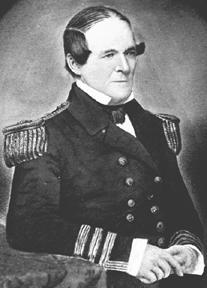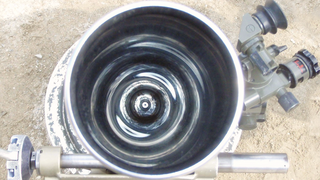USS Vesuvius (1845) was a 239-ton steamer acquired by the U.S. Navy for use during the Mexican–American War which was an armed military conflict between the United States and Mexico from 1846 to 1848 in the wake of the 1845 U.S. annexation of Texas.
A midshipman is an officer of the junior-most rank, in the Royal Navy, United States Navy, and many Commonwealth navies. Commonwealth countries which use the rank include Canada, Australia, Bangladesh, Namibia, New Zealand, South Africa, India, Pakistan, Singapore, Sri Lanka, and Kenya.

Puente Nacional is a municipality in the Mexican state of Veracruz. Puente Nacional is bordered by Actopan, the port of Veracruz, and La Antigua. It stands on the railway and on Federal Highways 140 and 125. In Puente Nacional the major products are coffee, fruits, and sugar.
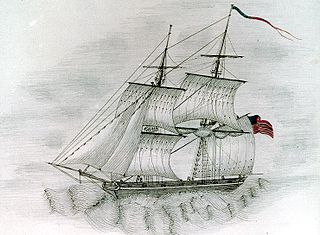
The second USS Somers was a brig in the United States Navy during the John Tyler administration which became infamous for being the only U.S. Navy ship to undergo a mutiny which led to executions.

USS Clemson (DD-186/AVP-17/AVD-4/DD-186/APD-31) was the lead ship of her class of destroyers which served in the United States Navy during World War II. She was named for Midshipman Henry A. Clemson (1820–1846), lost at sea when the brig USS Somers capsized in a sudden squall off Vera Cruz on 8 December 1846 while chasing a blockade runner. Entering service in 1919, the ship had a brief active life before placed in reserve in 1922. Converted to an aircraft tender in 1939, the ship reactivated in 1940. In 1943, Clemson reconverted to a destroyer and served in the Battle of the Atlantic during World War II. In 1944, the ship was converted into a high speed transport and transferred to the Pacific taking part in several invasions. Following the end of the war, the ship was taken out of service again and sold for scrapping in 1946.
Tenant McLanahan was an officer in the United States Navy during the Mexican–American War.

William Branford Shubrick was an officer in the United States Navy. His active-duty career extended from 1806 to 1861, including service in the War of 1812 and the Mexican–American War; he was placed on the retired list in the early months of the Civil War.
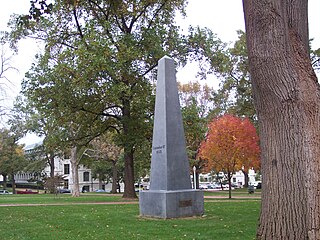
The Herndon Monument on the grounds of the U.S. Naval Academy is a 21-foot-tall (6.4 m) grey granite obelisk. It was erected in memory of Captain William Lewis Herndon, who courageously decided to go down with his ship, SS Central America, and the men left aboard rather than save himself on September 12, 1857. All women and children and many of the men aboard were saved by a nearby ship during the storm.
The fourth USS Spitfire was a sidewheel gunboat in the United States Navy during the Mexican–American War.

USS Albany, the first United States Navy ship of that name, was built in the 1840s for the US Navy. The ship was among the last of the wooden sloops powered by sail and saw extensive service in the Mexican War. Before and after her combat service, Albany conducted surveillance and observation missions throughout the Caribbean. In September 1854, during a journey along the coast of Venezuela, Albany was lost with all hands on 28 or 29 September 1854. Included among the 250 men lost were several sons and grandsons of politically prominent men.
Rear Admiral John Henry Russell was an officer of the United States Navy during the Mexican–American War and the American Civil War.
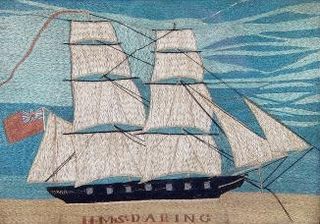
HMS Daring was a 12 gun-brig of the Royal Navy which became part of the Experimental Squadrons of both 1844 and 1845, and later served in the West Indies. She was sold in 1864.
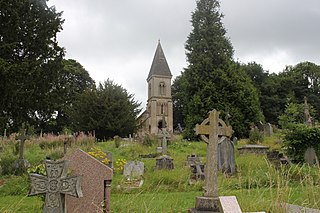
The Anglican Bath Abbey Cemetery, officially dedicated as the Cemetery of St Peter and St Paul, was laid out by noted cemetery designer and landscape architect John Claudius Loudon (1783–1843) in 1843 on a picturesque hillside site overlooking Bath, Somerset, England. The cemetery was laid out between 1843 and 1844.
Peter Rainsford Brady was an American military officer, surveyor and politician. Following a short service in the United States Navy he joined the Texas Rangers, where he served during the Mexican–American War and along the western frontier. From Texas he moved westward where he became an early settler and political office holder in Arizona Territory.
Joaquín Rea Mexican general in the Mexican–American War.
José Antonio Mijares (1819–1847) was a Mexican Army Lieutenant who led the Mexican resistance force against the American garrison of San José del Cabo in the Battle of San José del Cabo where he was killed leading the assault.
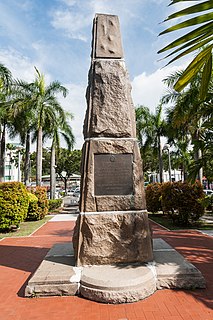
The North Borneo War Monument is a monument that was erected on 8 May 1923 by the North Borneo Chartered Company in Bond Street, Jesselton, British North Borneo. Originally, it was a memorial for the fallen British soldiers during the World War I but later extended to include the Australian soldiers in World War II. The monument stands today in the city park of Kota Kinabalu, the capital of the Malaysian state of Sabah.
